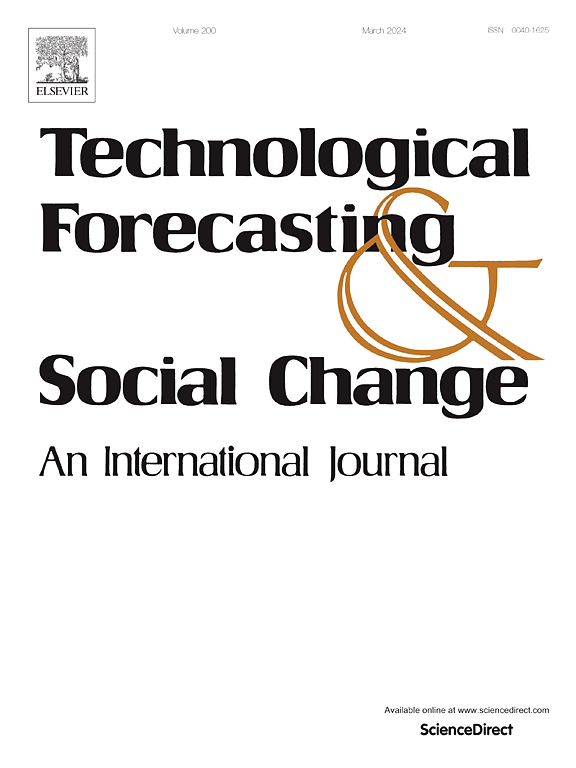揭示城市食物-能源-水系统可持续管理的风险动态:一个考虑三元复杂性的耦合模型
IF 13.3
1区 管理学
Q1 BUSINESS
Technological Forecasting and Social Change
Pub Date : 2025-09-02
DOI:10.1016/j.techfore.2025.124332
引用次数: 0
摘要
食物、能源和水(少数)短缺的风险越来越多地在城市与高水平的人类活动结合在一起。以北京市为例,基于系统动力学和Copula函数,构建了考虑城市FEW三元依赖关系的耦合模型,揭示了共享社会经济路径下的多维风险动态。结果表明,在SSP1条件下,到2100年,FEW需求将呈倒u型增长,分别达到140万吨、7500万吨标准煤和38亿立方米,综合短缺风险在0.7时达到峰值,随后下降至0.4。而在SSP5下,2050年后的风险将维持在0.8,FEW需求将上升到250万吨、1.3亿吨和6.6亿吨。能源短缺将持续保持高风险状态。应引进先进技术和高效设备,以确保可持续的能源供应和储备。水风险更多地受到普遍稀缺和权衡的制约,作为决定城市承载能力的一个限制因素,值得特别关注。应考虑包括城市功能转移和资源保护在内的可持续发展规划,以及调整产业结构和升级资源设施的协同多部门风险管理,以增强城市少数民族安全。本文章由计算机程序翻译,如有差异,请以英文原文为准。
Unraveling risk dynamics in the urban food-energy-water system for sustainable management: A coupled model considering trivariate complexity
Food, energy and water (FEW) shortage risks are increasingly combining in cities with the high levels of human activity. Taking Beijing as a case, a coupled model that considers the trivariate interdependence of urban FEW was developed based on system dynamics and the Copula function to unravel multi-dimensional risk dynamics under the Shared Socioeconomic Pathways (SSPs). Results show that FEW demands will follow an inverted U-shaped pattern until reaching 1.4 million tons (Mt), 75 million tons of standard coal (Mtce) and 3.8 billion cubic meters (Bm3) in 2100 under SSP1, with the composite shortage risk peaking at 0.7 then declining to 0.4. Whereas under SSP5, the risk will sustain >0.8 post-2050 with FEW demands rising to 2.5 Mt., 130 Mtce and 6.6 Bm3. Energy shortages will consistently maintain a high-risk state. Advanced technology and efficient equipment should be introduced to secure sustainable energy supplies and reserves. Water risk is more constrained by widespread scarcity and tradeoffs, deserving special attention as a limiting factor in determining a city's carrying capacity. Sustainable development plans including urban function relocation and resource conservation, and synergistic multisectoral risk management as adjusting industrial structure and upgrading resource facilities should be considered to enhance urban FEW security.
求助全文
通过发布文献求助,成功后即可免费获取论文全文。
去求助
来源期刊
CiteScore
21.30
自引率
10.80%
发文量
813
期刊介绍:
Technological Forecasting and Social Change is a prominent platform for individuals engaged in the methodology and application of technological forecasting and future studies as planning tools, exploring the interconnectedness of social, environmental, and technological factors.
In addition to serving as a key forum for these discussions, we offer numerous benefits for authors, including complimentary PDFs, a generous copyright policy, exclusive discounts on Elsevier publications, and more.

 求助内容:
求助内容: 应助结果提醒方式:
应助结果提醒方式:


